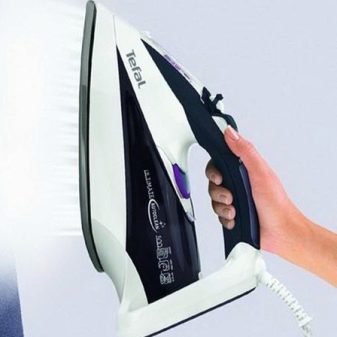What is plush and where is it used?

There are many different fabrics. Materials with soft bristles create a special atmosphere of warmth and comfort, and are very popular with many people. So, plush has a very good structure and attractive appearance. In today's article, we will find out what this material is like and where it is used.



What it is?
Plush is a woven fabric that has fibers ranging from 2 to 15 mm long. The fibers of such a fabric can be either stretched or neatly dispersed over the area of the woven material. In some cases, the villi are found only on a certain half of the product.
The pile, which is on the considered soft material, is located on its front side. It can be different: woolen, cotton, silk or synthetic. The villi are always smoothed towards one side. Plush is laid with special brushes.
At home, taking care of this material is simple, you just need to use simple types of brushes.
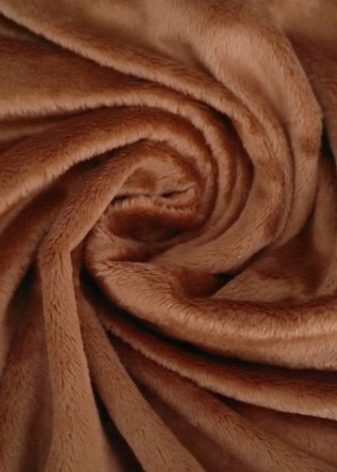

Plush, like any other woven material, has its own pros and cons. First, let's take a look at its main advantages:
- the material has an aesthetic and very pleasant appearance, which many people like;
- plush is characterized by high strength indicators;
- the fabric has excellent thermal insulation qualities;
- plush is universal for use in various fields and industries;
- the fabric in question does not lose its regular shape and attractive colors over a long period of time.
Unfortunately, soft and cozy plush is not without certain disadvantages:
- the material is quite expensive, especially if natural silk was involved in its production;
- plush is able to quickly accumulate dust deposits on its surface;
- stains are difficult to remove from the material in question;
- If you take care of the plush incorrectly, it can wear out very quickly and lose its original positive qualities.

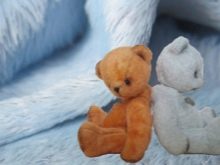

History of origin
It is believed that the first plush fabric with a delicate and silky pile was created in China back in the 3rd century BC. NS. In the 7th century, the manufacturing technology of this matter was mastered in the Middle East. It was from there that the plush material came to Europe.
Its own kind of soft fabric on the territory of Europe was created in the XIII century. During this period, the first guild of velvet weavers was formed in Venice. Plush was soon elevated to the rank of luxury materials. They began to sew high-quality garments and even shoes from it. Often things made from this fabric were additionally decorated with various precious stones or other decorative components.
Initially, only the richest people covered carriages or various pieces of furniture with soft fabric.

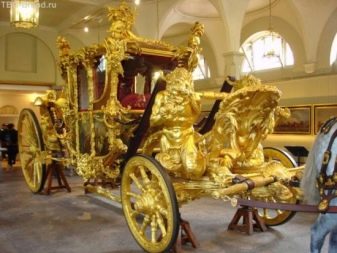
Until 1623, the material in question was imported to Russia from Europe. This continued until the time when its own Velvet Yard was founded in Moscow. Very warm and beautiful fabric quickly won the love of Russians. Already at the time of the 17th century, they began to make sheepskin coats, beautiful jackets from it. In addition, plush began to be used in Russia as an upholstery fabric. Elegant curtains and tablecloths were made of it, as well as carpets for fixing on the walls.
After a while, adorable plush toys were made from the soft fabric in question. The most famous of them, the teddy bear, even has its own birthday, which falls on October 27th.


Basic properties
Plush design and release methodology has a lot to do with the creation of velvet. The plush fabric is characterized by a really high pile. It is characterized by an optimal level of density, due to which it is perfect for a wide variety of types of clothing and soft items. This popular material is characterized by 3 strand systems.
Let's understand the basic physical properties and characteristics of high quality plush material:
- the indicator of the density of matter is represented by a value of 500-850 g per square meter. m;
- the level of hygroscopicity of plush is from 7 to 12%;
- tensile strength parameter of matter - up to 100 kgf;
- the considered popular fabric, characterized by a high level of softness, has not very good breathability;
- as for the capillarity of plush, then the rate of moisture absorption is quite insignificant;
- plush fabric is characterized by a low level of electrification.
The material does not form unsightly bald spots or broken lines. It is very popular, but requires proper care. If you make any mistakes while doing this, you can seriously damage the tissue.



Types of plush fabric
There are several varieties of quality plush fabric. The separation of materials occurs according to a number of specific characteristics, such as production technology, raw materials used, pile and texture.
By production technology
As stated above, making plush is a lot like making velvet. The main exception is the pile size on finished products. In addition, during the production of plush, 2 threads are applied to the needle. Because of this, the loops of the inner edges are elongated, and on the visible side, on the contrary, shortened. The main fibers of the fabric in question are called ground, and all the rest are plush. In order for a high-quality fabric with a smooth surface to be obtained in sewing hodja, it is necessary to correctly place certain threads in the corresponding loops.
To obtain high-quality cut-type material, special double-circuit machines are used. In their design, there is only 1 cylinder with reed-type needles. Another device is equipped with special hooks or needles for fountains. This design is called a ripple washer. These types of machines imply several basic types of systems that ensure the process of forming the villi. During the operation of the needle, 2 threads are obtained at once, simultaneously passing through each of the systems. In this case, the punctures are carried out at different angles. As a result, a cylindrical thread creates a soil, and a plush one creates loops. The loops are further cut by means of special shears of disc construction.


Thus, based on a specific type of plush matter, different categories of production facilities are involved.
- Kulirny material is made from cotton yarn or viscose thread. The length of the loops against this background reaches 3 to 4 mm. In this case, production processes are carried out on single-circuit machines.
- Kulirny material of a drawing type or a loop type of plush are produced on a special raschel machine.
- To create high-quality fabrics with high fleece (up to 16 mm), raschel machines are used, as well as double-flowed rounded devices.


For raw materials
The fibers in the plush structure are made from different materials:
- cotton raw materials;
- wool.
The cotton version is made up of a pair of warp and weft threads. The content of such raw materials includes threads made of high-quality viscose silk, coupled with wool. As a base, this material turns out to be much denser.
High quality plush made with wool is similar in many ways to fur with natural threads in the composition. The mass of the considered type of fabric per 1 sq. m can reach marks from 500 to 850 g. The tensile strength parameter of the matter is up to 100 kgf.
The product can very well retain heat due to the presence of a dense pile of impressive height.


On the pile
High-quality plush material can differ not only in its composition and manufacturing method, but also in the state of the pile. There are variations.
- Natural silk pile can be used in quality products. He practically does not accumulate dust on himself, but he needs careful and regular care.
- A separate type of pile is available in smooth materials. The proper structure of the villi has a standard plush material. The height of all its surfaces is the same. As a rule, fabrics with similar fibers are used for upholstering furniture structures.
- The reinforced type of pile is most often used in the production of shaped material. In such fabrics there is not only reinforced, but also pile cut in places.
In addition, the pile of the woven material in question is:
- one-sided;
- bilateral.
The length of the villi varies. Short-haired specimens are characterized by a length parameter of up to 8 mm, and long-haired specimens - up to 16 mm.

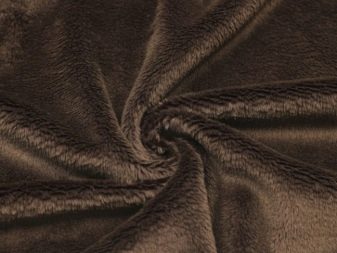
By texture
The surface texture of the material in question is different:
- smooth;
- embossed;
- shaped;
- decorated with drawings.
The surface of the plush fabric can be solid or patterned. Variants are widespread, implemented in the form of narrow or wide stripes, as well as small and large patterns of villi. Despite its impressive mass and thickness, the plush can drape remarkably.

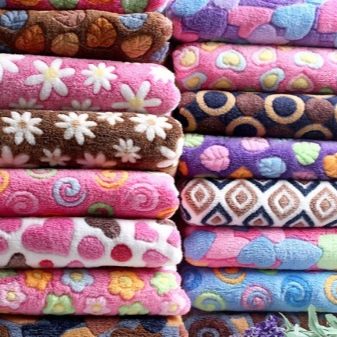
In order to form the necessary texture and texture of the woven material, fibers with different lengths and densities, as well as alternating fluffy and smooth zones on the plush, can be used in one fabric. The famous Minky plush is characterized by a very original texture. This material is covered with soft pimples, it looks interesting and unusual.
Many different things are produced from such fabrics, for example, modern children's overalls.


Applications
Currently, plush fabric is in great demand as it can be used in various industries. The following things are made from this fluffy and soft material:
- quality toys for children;
- lovely and very warm jackets, coats and short fur coats;
- leisure clothes, which are in great demand today;
- a variety of baby things, from envelopes to baby blankets or overalls;
- plush bedspreads and blankets;
- wonderful designer models of tablecloths, as well as chic curtains of an original look;
- benches for pets;
- decoration for official premises and concert halls;
- costumes for theatrical performances, as well as theater curtains.
It is possible to sew a wide variety of things from modern high-quality material. This only confirms the versatility and multitasking of this type of fabric.


Care rules
It doesn't matter what color the plush has: white, pink, brown or some other. In any case, this material will need proper and regular care. We must not forget that such a product is demanding. That is why any wrong actions can ruin the material.
In order for an attractive fabric to retain its positive characteristics for a long time, it is necessary to adhere to a number of important rules for caring for it.
- Products made of plush fabric are recommended to be subjected to only high-quality dry cleaning.
- If a person has planned to wash a plush product on his own, then it should not be squeezed out in any case. In this case, washing should take place exclusively when setting the delicate mode.
- For ironing the matter in question, it is advisable to set the "Vertical steaming" mode. Standard ironing can seriously damage the appearance of the product.
- To remove dirt from the plush surface, it is not allowed to use too coarse brushes and aggressive chemicals.

